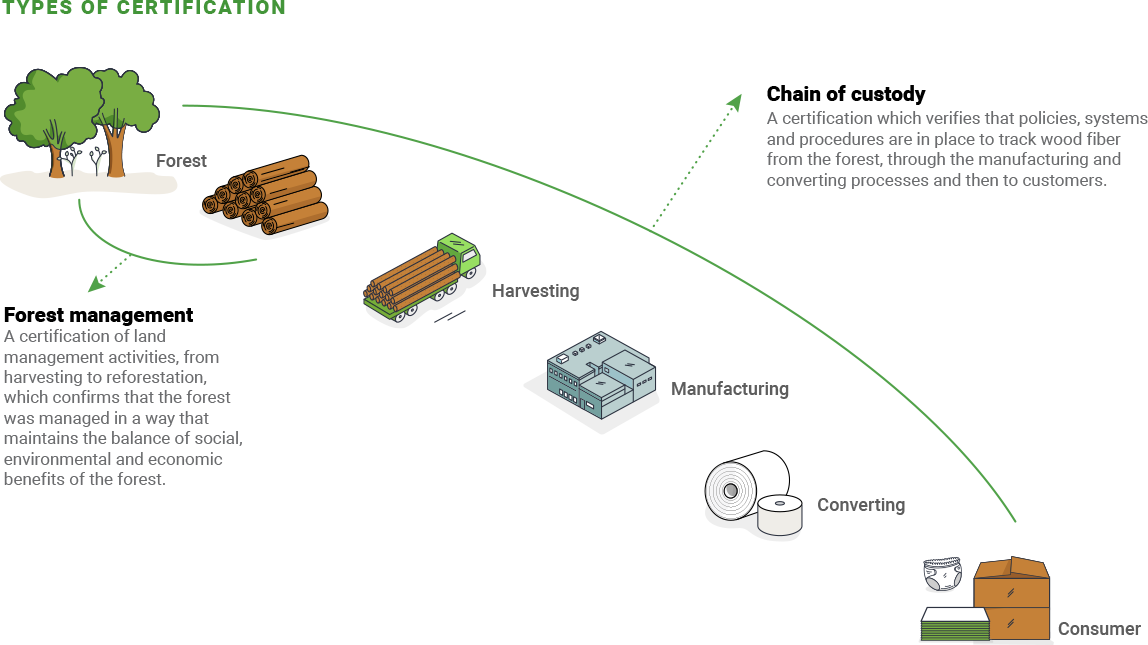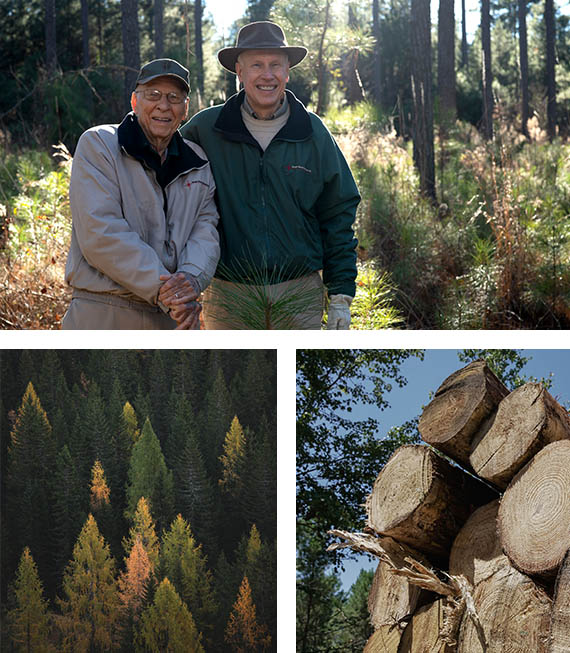Knowing what is responsibly made can be confusing for shoppers wanting to do right by people and the planet when purchasing paper products.
To help guide these purchasing decisions for consumers, there are several third-party certification labels displayed on responsibly made fiber-based packaging at retail stores. Just as the USDA Organic label on food products helps identify organic produce, third-party certification labels such as Forest Stewardship Council® (FSC®) and Sustainable Forestry Initiative® (SFI®), among others, can help you find socially and environmentally responsible fiber-based products.
Third-party certification promotes responsible forest management, protects against deforestation and supports biodiversity. Companies and landowners must meet rigorous standards created by independent organizations to achieve certification.
Certification Is:
just one way to help you gain insight about the sustainability of a fiber-based product
confidence that a product's sustainable sourcing has been verified by a third party
proof that a product was sourced from a responsibly managed forest
traceable and transparent
voluntary
a rigorous process
reliable

Common Certifications
All of International Paper's mills are certified to one or more third-party or Chain of Custody standard.1
How Does A Company Or Landowner Achieve Certification?

Certification promotes responsible forest management and supports biodiversity. However, certification is not always easy or possible, especially for small forest landowners. Landowners can be reluctant to take on the additional responsibility and costs associated with certifying their property. Because of this, roughly 30 percent of total global productive forestland is third-party certified.
Despite these global certification rates, International Paper is leading the way: 38% of our fiber supply is certified – a 48% increase since 2010. By purchasing third-party certified paper products, you can help increase the amount of protected forestland by contributing to a market demand that incentivizes farmers to embrace certification.
The company or landowner applies for certification through an accredited third-party organization, such as one listed above.
The company or landowner undergoes a rigorous audit based on certification standards, which are developed by a diverse group of stakeholders. Audits evaluate the social, environmental and economic impacts of their forest management practices. Chain of custody certifications take it even further by evaluating wood fiber from the forest through the manufacturing and converting processes, and on to customers.
If the results of the audit comply with certification standards, the company or landowner is granted certification. By sourcing fiber from certified landowners, manufacturers are able to provide consumers with certified products.
Auditors are independent of the certification organization to ensure the integrity of the system.
Which Certification Is Best?
Although some certification marks are more well-known in different parts of the world, all third-party certifications are helping to ensure that more and more forests are being properly managed – and continue to be managed as forestland even after harvest.
How Can I Find Certified Products?
To learn more about FSC-certified products, download the FSC shopping guide.
To search for SFI-certified paper products, click here.
Should I Avoid Non-Certified Products?
A lack of certification doesn't necessarily mean the forests are irresponsibly managed or degraded, nor that its fiber contributes to deforestation. Companies committed to responsible forestry will ensure their suppliers are promoting healthy forests through good forest management principles.
At International Paper, we are committed to ensuring that non-certified forests are managed responsibly. You can be confident that our sourcing policies safeguard against the degradation of forestland. In fact, we have systems in place to track and purchase certified fiber and to exclude fiber from our processes that is not from responsible sources.
When You Buy A Certified Product You Are Supporting Assurances That...
- Fiber did not come from illegal logging or trade
- The forest ecosystem was protected from planting through harvesting
- Harvest levels are sustainable and promptly regenerated
- Management strategies protect at-risk species and wildlife habitat
- Audit reports are publicly available and highlight how the forest is being managed to standards
- The product is traceable through the supply chain back to a certified forest
You Can Make An Informed Decision By Looking For Certification Labels When Purchasing Fiber-Based Products.

Key Takeaway
Third-party certification is a reliable indicator to help consumers like you better understand when a paper product was sourced responsibly, protecting our planet’s vital natural resources and contributing to assurances that the land where materials were sourced from is managed in a sustainable way.
Sources
Additional Resources
Downloads, fact sheets, reports and more.
FAQs
Answers to frequently asked questions about forestry, paper, packaging and pulp
Should I Go Paperless?
There may be good reasons to go paperless, but saving trees isn’t one of them
Learn MoreAre Recycled Paper Products Always Better for the Planet?
Recycling is only part of the sustainability equation
Learn More